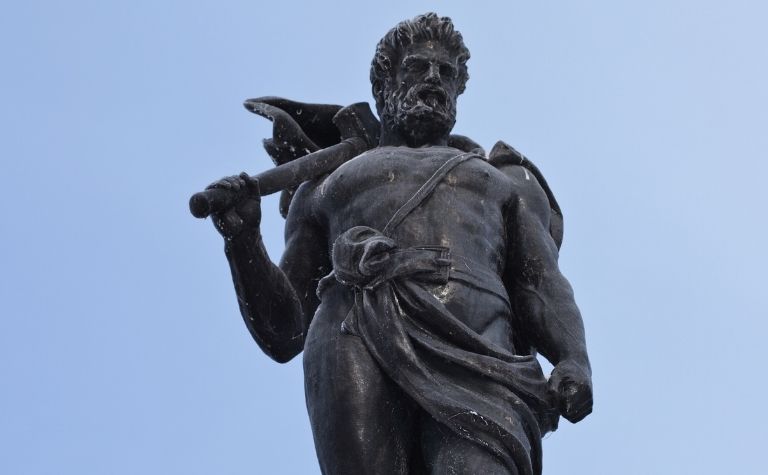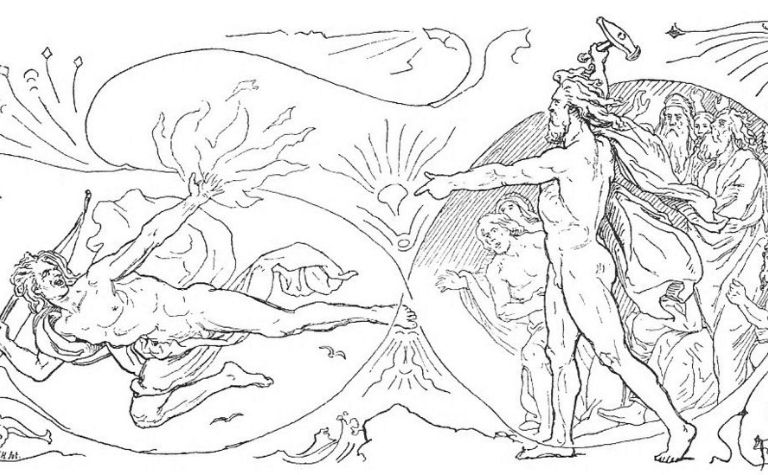Due to the massive popularity of the Marvel Cinematic Universe, ancient Norse deities like Thor, Loki, and Odin are once again household names.
That’s especially true in the Scandinavian regions where people once worshipped these gods, but do people in Scandinavia still believe in gods like Thor today?
Today, a few Norwegians and other Scandinavians still believe in and worship Thor, Odin, and other Norse gods.
This practice of worshipping Norse gods is called Ásatrú, Heathenry, Odinism, or Norse Paganism. While nowhere near as popular as Christianity, Ásatrú is a nationally recognized religion.
This article will further examine the beliefs of the Norwegian people, both as they relate to Ásatrú and other religious affiliations.
It will also discuss the two nationally recognized Pagan organizations and explain the source of Thor’s popularity in the region. Keep reading to find out more.
Also, see Can Thor Fly In Norse Mythology? to learn more.

Do Norwegians Believe Norse Mythology Is Real?
Before Christianity came to Norway in the early 8th century, nearly everyone in Norway believed in, worshipped, and sacrificed to the Norse gods.
Christianity didn’t gain a foothold with the Norwegian people until sometime in the late 9th century. [1]
It wasn’t until the reign of King Olaf I Tryggvason that people converted to Christianity in large numbers. [2]
Today, the largest percentage of Norwegians are Christians, but there are still a few hundred people who believe in Norse mythology.
Believers can also be found in Denmark, Sweden, Iceland, and the UK, and the USA to a lesser extent.
Some practicing Wiccans also recognize the Norse deities. [3]
Belief in Norse Paganism is on the rise in Iceland and many of the Scandinavian countries.
It’s become so popular that a temple to the Norse gods, Hof Ásatrúarfélagsins, is currently under construction in Iceland.
Hof Ásatrúarfélagsins will be the first temple of its kind built in over 1,000 years. [4]
Norway doesn’t currently have any plans for building a temple, but it does have two nationally recognized Norse Paganism organizations: Åsatrufellesskapet Bifrost and Forn Sed Norge. [5]
Åsatrufellesskapet Bifrost and Forn Sed Norge
Initially founded in 1996 under the name Bifrost, Åsatrufellesskapet Bifrost petitioned the Norwegian government in 1998 to change its name and become an officially recognized religious organization.
At first, the government denied the group’s request. The denial was later overturned, and the government legitimized the organization under the name it still holds today.
However, the beliefs of Åsatrufellesskapet Bifrost’s members were not limited strictly to faith in the Norse deities.
They also had ties to LaVeyan Satanism and Thelema.
Many of the organization’s members didn’t appreciate these connections, so they broke away from the group to form Forn Sed Norge, which is strictly devoted to the Norse pantheon and Norwegian folklore.
The Norwegian government recognized it as a religious organization in 1999.
These are the only two government-recognized Norse religious establishments in Norway.
Today, Åsatrufellesskapet Bifrost has over 400 members, and Forn Sed Norge has over 100, with their membership growing each year.
Also, see Are Thor and Loki Brothers in Norse Mythology? to learn more.

Ásatrú Beliefs
The members of both these organizations – and various, non-affiliated Norse pagans throughout Scandinavia – believe strongly in the tales of Norse mythology, and they regularly worship and pray to the Norse gods.
Their “sacred texts” are The Poetic Edda and The Prose Edda, both of which tell the stories of Odin, Loki, Thor, and the other Norse gods.
Norse Pagans have four sacred holidays, or blots, each year. During these blots, members share mead and give a sacrificial, ritual gift to specific deities. (Today, these sacrifices aren’t usually living things.)
If their gifts are received favorably, they believe the deity will bless them in their upcoming ventures.
Wedding and funeral ceremonies are also special and sacred to followers of Ásatrú. They usually celebrate them differently than people who ascribe to other faiths.
What Religions Do Norwegians Follow?
Most Norwegians practice Evangelical Lutheranism. [6] According to World Population Review, the religious breakdown of Norway looks something like this:
- Church of Norway (Evangelical Lutheran): 71.5%
- Roman Catholic: 2.8%
- Christian (Other): 3.9%
- Muslim: 2.9%
- Other (Including Ásatrú): 2%
- Unaffiliated: 16.8%
For many years, the official religion of Norway was Evangelical Lutheran, and most Christians were members of the official Church of Norway.
However, in 2012, the Norwegian parliament officially voted to separate church and state. [7]
The change went into effect on June 15, 2012, and the country hasn’t had a state religion since that time.
Despite the separation, the vast majority of Norwegians affiliated with a religious organization are still members of the Church of Norway.
There are a few other Christian denominations in Norway, but their members make up only 6.7% of the country’s religious-affiliated population.
Aside from Christianity and Islam, which has approximately 182,000 followers, other religions practiced in Norway include:
- Buddhism
- Hinduism
- Sikhism
- Baha’ism
Religions like Judaism, Ásatrú, and Wicca also exist in the country, but they have fewer than 1,000 registered members each. [8]
Also, see Is Thor Immortal in Norse Mythology? to learn more.
Is Thor a Popular Figure in Norway?
Thor is popular in Norway as a symbol and a character, not as an actual god to be believed in or worshipped.
People like to tell stories about him because he was loud, brash, handsome, largely happy, and a lot of fun. Thor’s hammer, Mjölnir, is also a famous symbol in jewelry and art.
Even among people who don’t believe in Norse mythology or worship the Norse deities, Thor is a well-known figure.
As for the many people in Norway today who don’t believe the Norse gods are real, Thor is still a familiar figure.
Thor’s popularity in Norway is similar to that of James Bond, Han Solo, or Superman in America.
People talk about him, tell stories about him, and wear clothing and jewelry with references to him on them.
That doesn’t mean they believe he was or is real. It just means the stories about him are exciting to tell.
He was a large, strong man who loved to drink and fight. There are plenty of people who can relate to that.
Final Thoughts
While most Norwegians think of Thor and the Norse myths as nothing more than fiction, some people believe in these deities even today.
References:
[1] Source
[2] Source
[3] Source
[4] Source
[5] Source
[6] Source
[7] Source
[8] Source
